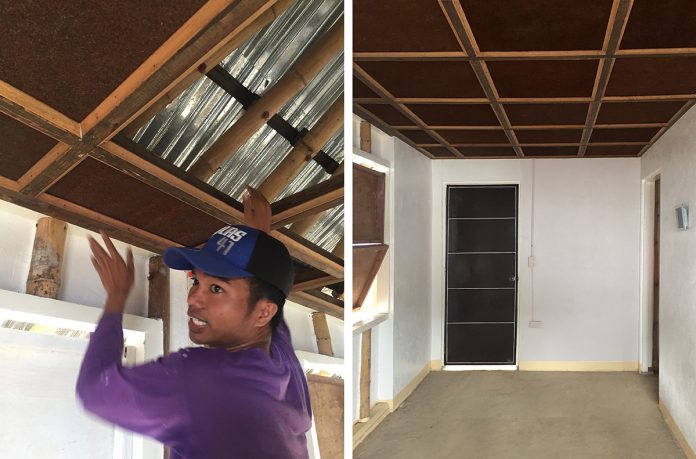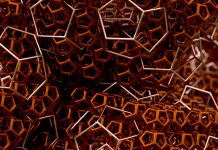Dr Frédéric Pichelin, Head of Institute for Materials and Wood Technology at the Bern University of Applied Sciences tells us about an intriguing and affordable building material made from coconut husks, called Cocoboards that can be used to support social housing
In search of inexpensive building materials for the Philippines, researchers from Switzerland and the Philippines have developed an environmentally friendly technology to produce ecological construction panels made of crop residue from the coconut harvest. In cooperation with the Hilti Foundation, they have tested board production on a commercial scale and have installed them in the framework of a social housing project.
Prof Frédéric Pichelin, head of the Research Institute for Material and Wood Technology, Switzerland, is presenting this promising technology.
People in the Philippines are facing an increasing shortage of adequate living space; those with the lowest income, in particular, cannot afford secure housing. The constructions there, usually erected with the simplest of means and materials, are often damaged or destroyed by regularly recurring tropical storms. Today, due to the lack of any locally produced, affordable building materials, expensive or inferior building construction materials are usually imported.

Using coconut husk as a resource for sustainable building material
With an annual production of 15 million tonnes of coconut, the Philippines are the second largest coconut producer worldwide after Indonesia. Roughly five million tonnes of coconut husks are discarded or burnt after harvest. Herein lies a tremendous potential: the husk of the coconut is rich in fibrous materials and therefore, represents a possible source of building materials.
This realisation, together with the quest for environmentally friendly building materials, has led a team of researchers of the Bern University of Applied Sciences BFH and the University of Applied Science and Arts of Western Switzerland ARC to use milled coconut husk in combination with a natural tannin-based adhesive to produce construction panels. Since 2010, the BFH has been conducting research into the use of crop residues for the production of building materials.
From the laboratory to the market
The research team’s primary objective was the development of an environmentally friendly technology for the production of an affordable and natural building material, in this case, a fibreboard consisting of crop residue from the coconut production with a tannin-based adhesive. In doing so, the entire process – from the laboratory work up to the delivery of the finished product for house construction – was examined. The project team set up pilot production in the Philippines and monitored the test use of the boards in a local housing programme.
Local production for a local supply
The project team is motivated by the idea of developing new products from available resources and then making them available to the local building industry. In turn, this also decreases the dependency of the local market on imported, often expensive and environmentally hazardous materials. Additionally, the processing of raw materials by locals already familiar with the coconut industry and its market mechanisms will increase local added value.
The market launch is imminent
The project results indicate that the Cocoboards offer considerable potential for the local economy. The panels are fairly easy to manufacture and install and the raw material is available in a sufficient quantity. People with lower incomes who already work in the coconut industry can actively engage in the value creation as a supplier, producer and customer. In addition to the creation of jobs, this also fosters the acceptance of environmentally friendly building materials and the creation of blueprints for sustainable production, which are two of the United Nations Sustainable Development Goals.
Next steps
Corresponding follow-up projects are in the pipeline, with an emphasis on measures to launch Cocoboards and on an increase in the chain of added value. Priorities include the setting-up of a stable production line for Cocoboards, the supply of raw materials.
Another major issue is the development of a local tannin production. The current main sources of condensed tannins are the heartwood of Quebracho (Schinopsis lorenzii and S. balansae) and the bark of Black Wattle (Acacia mearnsii), mostly produced in South America and Southern Africa. The import of this raw material has a negative impact on the Life Cycle Analysis of the whole process. A new project has just been launched, with the aim of investigating the potential of local biomass for the production of tannin. Moreover, the water-based extraction process of the tannin extract process should use solar energy, which will have a strong benefit on the grey energy.
To conclude, the whole production of this construction material can be taken as an example of a circular economy in the context of biomass valorization. A waste used until now can be transformed in a fully bio-based and compostable building material that can easily be recycled at the end of its life. If this is possible in a developing country, it should also be possible in our developed countries!
Please note: this is a commercial profile
Dr Frédéric Pichelin
Head of Institute for Materials and Wood Technology
Bern University of Applied Sciences
Tel: +41 32 344 03 42











